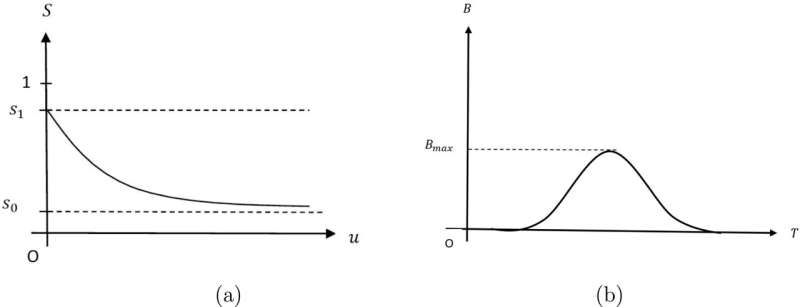This article has been reviewed according to Science X's editorial process and policies. Editors have highlighted the following attributes while ensuring the content's credibility:
fact-checked
proofread
Mathematician creates mass extinction model regarding climate change and adaptation

A RUDN University mathematician and a colleague developed a theoretical model of mass extinction. The model for the first time took into account two important factors—the inverse effect of vegetation on climate change and the evolutionary adaptation of species. The results were published in Chaos, Solitons & Fractals.
Over the past half-billion years, there have been five known major mass extinctions, when the number of species dropped by more than half. Several dozen smaller extinctions also occurred. There is debate about the causes of mass extinctions of species. Among them are global warming and cooling. However, exactly what climate change factors lead to extinction and what processes occur is unknown.
A RUDN mathematician and a colleague have built a theoretical model of mass extinction due to climate change taking into account important parameters that have so far been overlooked.
"Mass extinctions are an important part of the history of life on Earth. It is widely believed that the main cause of mass extinction is climate change. A significant change in the Earth's average temperature leads to global warming or cooling and triggers various mechanisms that may lead to species extinction."
"Over the past two decades, significant progress has been made in understanding the underlying causes and triggers, but many questions remain open. For example, it is well known that not every climate change in Earth's history has resulted in a mass extinction. Therefore, there must be factors or feedback that weaken the impact of climate change," said Sergei Petrovsky, professor at RUDN University.
The mathematicians took into account that some key players in climate change, such as vegetation, contribute to active feedback. The ratio of solar radiation reflected by the Earth to the total (albedo) depends, among other things, on the properties of the surface, that is, on its coverage with vegetation. A second important factor that is commonly overlooked is how species adapt to climate change.
Analysis of the mathematical model showed that whether a species goes extinct depends on the delicate balance between the scale of climate change and the speed of evolutionary response. It also turned out that adaptation of species can lead to so-called false extinction when population density remains low for a long time, but then recovers to a safe value.
Mathematicians also verified the adequacy of the model by comparing its predictions with paleontological data. Extinction frequency distributions are consistent with data obtained from fossil analysis.
"Our model shows how climate-vegetation interactions and the evolutionary response of individual species affect extinction. These two factors are important but are practically not studied. The model's predictions about the extent of extinction are generally consistent with paleontological data."
"Although fossil evidence provides, at best, only a partial picture of the true scale of the extinction, with softer-bodied species typically disappearing without leaving any trace. The question of how it will change if data on soft-bodied species is included in the analysis remains open. This may partly explain the discrepancy between our model and fossil data," said Sergei Petrovsky, professor at RUDN University.
More information: Amer Alsulami et al, A model of mass extinction accounting for the differential evolutionary response of species to a climate change, Chaos, Solitons & Fractals (2023). DOI: 10.1016/j.chaos.2023.114018
Provided by Scientific Project Lomonosov




















